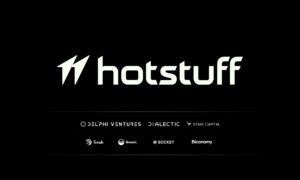Workplace safety holds an elevated status of primacy. For professionals in health and safety management as well as compliance officers stationed in Australia, Safe Work Method Statements (SWMS) are often perceived as a mandated requirement. These are viewed as an obligatory, albeit dull part of abiding by workplace safety protocols. However, what would your reaction be if we shed light on the possibility of leveraging SWMS checklists and management as strategic tools? These can augment not just safety, but also streamline efficiency and boost the general performance of the business.
A Culture of Safety and Security
In essence, SWMS is aimed to pinpoint risks and delineate the safest methods to perform tasks. While being compliant is crucial, the true potency of SWMS lies in its capacity to nurture a culture of safety and security within the organisational framework. By interlacing SWMS into daily functions, corporations can evangelise a proactive approach to safety. Employees maintain constant vigilance about potential hazards and are cognizant of the measures to alleviate them. This shift in culture not just minimises incidents but also uplifts the overall morale and productivity.
Efficiency Through Standardization
SWMS management has an oft-overlooked virtue of ushering standardisation into work processes. A standardised checklist enlists every task in detail, ensuring a uniform understanding among all employees. This conformity can markedly decrease errors, streamline functions, and confirm that work is accomplished effectively. In essence, SWMS checklists transform into a tool for operational excellence, propelling performance levels across all levels.
Key Benefits of Effective SWMS Management
Enhanced Risk Management
Efficient SWMS management sets up a rock-solid framework for spotting, assessing, and dodging risks. This methodical approach ensures every potential hazard gets its moment in the spotlight, with the right safety measures swooping in to save the day. By keeping a close eye and constantly updating SWMS, businesses can stay one step ahead of new risks, maintain a safe workplace, and avoid costly mishaps.
Improved Employee Engagement
Employees who feel safe and valued? They’re like productivity ninjas. When businesses ace SWMS management, it shouts, We care! This safety-first vibe boosts morales lashes turnover or creates a workplace where everyone wants to bring the A-game.
Regulatory Compliance and Reputation
In Australia, playing fast and loose with workplace safety norms isn’t an option—it’s a one-way ticket to trouble. However, businesses that excel in SWMS management go beyond compliance, and establish themselves as industry leaders in safety. This proactive approach can amp up the company’s reputation, attracting clientele, partners, and top talent who value a commitment to safety and excellence.
Implementing a Strategic SWMS Framework
Comprehensive Training Programs
To truly wield SWMS as a strategic tool, investing in comprehensive training programs for all employees is a no-brainer. Give them the skills, and watch them turn into safety superheroes. Training should not only encompass the technical nuances of SWMS but also the underlying precepts of risk management and safety culture. Armed with this knowledge, employees can actively contribute to safety initiatives and bring about continuous improvement in workplace practices.
Regular Audits and Updates
SWMS should never be static documents. Regular audits and revisions are pivotal to ensure that the SWMS remains relevant and effective. By ceaselessly evaluating and updating SWMS, businesses can adapt to changing conditions and emerging risks, maintaining a dynamic and responsive safety management system.
Leveraging Technology
Contemporary technology offers potent tools to boost SWMS management. Digital platforms can streamline the creation, surveillance, and updating of SWMS, making the process more efficient and accessible. By leveraging technology, businesses can ensure that SWMS are always up-to-date, easily accessible, and interwoven into daily operations.
SWMS checklists and management are more than just compliance tools. They are strategic assets that can propel safety, efficiency, and overall business success. By transforming how businesses perceive and utilise SWMS, health and safety managers and compliance officers can unlock their full potential, evolving workplace safety into a competitive advantage.



































